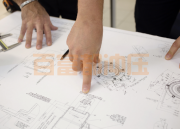There are three points in PAX’s deep-drawing strength
Production and Technology
Our specialty is very deep drawing, a process we are good at and the result of know-how acquired during over 20 years of activity.
design
We pay close attention to the needs and expectations of our clients . This commitment translates into finding the most efficient technical and quality solutions to create new products.
Our technical office is equipped with the most innovative analysis, design and simulation tools for feasibility studies, co-design and prototyping Provide support to customers.
Quality

Ongoing production checks are regularly documented in in our database for statistical evaluation.
Our daily goals are:
• Continuous Improvement
• Product Quality
• Punctuality and reliability
• Production flexibility< br style="box-sizing: border-box;"/>• Technical competence and professionalism
• Lean Manufacturing
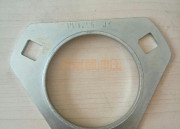
According to the processing method of the product, what types of stamping dies can be divided into?
1. What types of stamping dies can be divided into?
According to different product processing methods, molds can be divided into five categories: punching and shearing molds, bending molds, drawing molds, forming molds and compression molds.
1. Punching and shearing die: The work is completed by shearing. Commonly used forms are shearing dies, blanking dies, punching dies, trimming dies, edge-forming dies, punching dies, and punching dies.
2. Bending die: It is a shape that bends the flat blank into an angle. Depending on the shape, precision and production volume of the parts, there are many different forms of dies, such as ordinary bending dies, cam bending dies, curling dies Dies, arc bending dies, bending punching dies and twisting dies, etc.
3. Drawing mold: Drawing mold is to make flat blank into seamless container with bottom.
4. Forming die: refers to changing the shape of the blank by various local deformation methods, and its forms include protrusion forming, curl forming die, necking forming die, hole flange forming die, and round edge forming die.
5. Compression mold: use strong pressure to flow and deform the metal blank into the desired shape. Types include extrusion dies, embossing dies, imprinting dies and end press dies.
Here we share the classification of processing methods of stamping die products. If you have any other questions, you can also consult us! We are a manufacturer of stamping molds, continuous stamping molds, metal stamping molds, continuous molds, school tool molds and other mold processing manufacturers. Feel free to contact us!
Read More →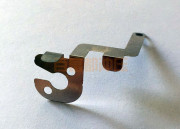
What are the assembly steps of the stamping die?
1. Assembly steps of stamping die
1. Select the assembly reference parts. When assembling, first select the datum part. The principle of selecting the reference parts is determined according to the dependence of the main parts of the mold in the processing process. The main components that can be used as assembly reference components are punch, die, punch, guide plate and fixed plate.
2. Component assembly. Component assembly refers to the assembly work in which the mold connects two or more components into a component according to the specified technical requirements before assembly. Such as mold base assembly, punch, die, fixed plate assembly, unloading, assembly of various components of the thrust mechanism, etc. These parts should be assembled according to the function of each part to ensure the assembly accuracy of the entire stamping die.
3. Overall assembly. Final assembly is the process of combining parts and components into a complete stamping die. Before final assembly, the assembly reference parts should be selected and the assembly sequence of the upper and lower molds should be arranged.
4. Adjust the gap between the convex and concave die. When assembling the mold, the uniformity of the punch and die gap must be strictly controlled and adjusted. After adjusting the clearance, tighten the screws and pins.
The methods of adjusting the gap between convex and concave molds mainly include light transmission method, measurement method, gasket method, coating method, copper plating method, etc.
5. Inspection and debugging. After the stamping die is assembled. The assembly accuracy must be guaranteed, the specified technical requirements must be met, and the function of each part of the mold must be checked according to the technical conditions for mold acceptance. Die tryouts are carried out under actual production conditions, and adjustments and corrections are made according to the parts produced by the die. After the mold test is qualified, the mold processing and assembly are basically completed.
Do you now have an understanding of the assembly steps of the stamping die? I hope this article helps you! We are a manufacturer of stamping dies, continuous stamping dies, metal stamping dies, continuous dies, school tool dies, etc. We are also a die manufacturer integrating design, production, processing, sales and service. You can contact us if necessary. !
Read More →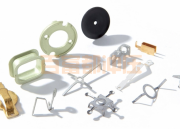
Customized deep drawing
Our commitment is to provide you with tailored, high-quality, reliable parts, assemblies and sub-assemblies that meet co-built specifications. For this, we rely on our 30 manual and automatic presses from 6 to 350 tons, more than 12,000 molds and more than 2,000 square meters of workshop and storage space.
Stamping can handle the most demanding industries: agricultural equipment, aviation, railways, automotive, defense, machine building, electric motors, pumps, food processing, electronics, machinery subcontracting, nuclear power, energy, environment…
The pressing process makes it possible to design a wide variety of industrial parts.
Various shapes of parts: -drawings
Standard or special gasket on-lid-lid– the lid and surface of the gauge– many metal mechanical partsIndustrial products of various sizes:Standard, Standardized or Drawing. Thickness: between 0.2mm and 6mm (depending on material).
different materials Stamping:
– Cold Rolled Sheet, Hot Rolled Sheet, Galvanized Sheet
– Stainless Steel-
aluminum
– brass
Read More →
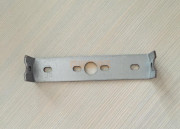
Why do metal stamping dies need to try out?
After stamping and producing qualified samples, the performance and forming conditions of the mold have mastered the methods and rules of the product parts during the stamping process, which provides a reliable process design basis for the mass production of the mold. In the production of cold stamping dies in metal stamping parts factory, it is difficult to accurately calculate the size and shape of the blank before the blank is deformed, such as deformation, stretching, forming, cold extrusion and other product parts with complex shapes or high precision requirements. In order to obtain more accurate blank shape dimensions and material standards, qualified parts can only be determined by repeatedly debugging the mold.
In die design and process design, it is difficult to determine some process dimensions by calculation methods, such as complex protrusions of deep drawing die, rounded corners of concave die, geometry and size of certain parts. The metal stamping parts factory must carry out test punching and trimming at the same time, and the shape and size of the parts can only be determined after the qualified parts are punched out. After debugging, the problems, debugging and solutions exposed in the process, mold design and manufacturing are fed back to the relevant design and process departments to provide reference for the next design and manufacturing, and improve the level of mold design and processing. The metal stamping parts factory verified the quality and precision of the mold through the mold test, which provided the basis for future production.
The above is why metal stamping dies need to be tested before use. I hope it helps you. If you want to know more about stamping die, you can also pay attention to our website, we will update the information of stamping die from time to time!
Read More →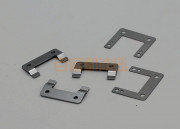
How much do you know about the principle of stamping parts processing?
1. The principle of stamping processing
Stamping parts are actually the use of punches and dies to apply external forces to sheets, strips, pipes, and profiles to cause plastic deformation or separation, so as to obtain the required shape and size of the workpiece. The processing method, the obtained workpiece It’s stamping parts.
1. Stamping parts are made by stamping under the premise of low material consumption and small consumption. Its parts are lightweight and rigid. After the plastic deformation of the plate, the internal structure of the metal is improved, and the strength of the stamping part is improved.
2. The dimensional accuracy of the stamping parts is high, and the size of the stamping parts is uniform and the same as that of the die, and the interchangeability is good. The general assembly and use requirements are well met without further machining.
3. The surface quality of stamping parts is good, the appearance is smooth and beautiful, which provides convenient conditions for surface coating, electroplating, phosphating and other surface treatments.
Read More →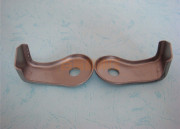
What are the external surface defects of electronic stamping parts
First, the advantages of electronic stamping parts processing
1. The electronic stamping processing of precision stamping parts has high production efficiency, convenient operation, and is easy to realize mechanization and automation. This is because stamping is based on stamping dies and stamping equipment to complete the processing. The ordinary press is dozens of times per minute, and the high-speed pressure is hundreds or even hundreds of times per minute.
2. In the case of electronic stamping parts for precision stamping parts, because the die ensures the size and shape accuracy of the stamping parts, the appearance quality of the stamping parts is generally not damaged, the service life of the die is generally long, the stamping quality is stable, the interchangeability is good, and the consistency specialty.
3. Precision stamping parts can process parts with large sizes and complex shapes, such as stopwatches as small as clocks, car longitudinal beams, cover parts, etc. Coupled with the cold deformation hardening effect of the data during the stamping process, the stamping strength and stiffness are high.
4. The stamping of precision stamping parts generally does not generate chips and debris, the material cost is low, and other heating equipment is not required. It is a processing method that saves materials and energy. The cost is relatively low.
With the development of society, stamping products have been popularized in all walks of life, and it is very important to process high-quality stamping parts. In the stamping process, there will be many shortcomings in the appearance of its products. What’s the matter?
When processing stamping parts, there are sometimes problems such as impact lines, slip lines, sinking, dark pits, and distorted appearance. For stamped sheet parts, cosmetic defects are not allowed. How did it form?
(1) The impact line and the slip line are mainly due to the appearance scratches, sags and dark pits formed by the conflict between the sheet and the mold after the contact of the stress accumulation during the stamping process.
(2) The appearance distortion is mainly due to the insufficient deformation of the parts, the small strain of some materials, and the shortcomings after the external force is released. So how to eliminate these shortcomings?
By changing the punch fillet and die fillet, the drawing depth is increased, the pressing material surface is changed, and the impact line is eliminated.
Slip lines can be eliminated by changing the product shape (left-right symmetry), increasing resistance, etc.
Eliminate subsidence and appearance distortion, understand the grade of stress gradient of parts in the deformation area, and try to ensure the uniformity of plastic deformation of products. At the same time, by increasing the resistance, part of the shape strain is improved.
More and more shortcomings can be identified in CAE simulation and use as technology evolves. For example, through the tangent displacement field of the molding, it is possible to understand the activity of the data and help to better solve the shortcomings in the molding of the part.
Read More →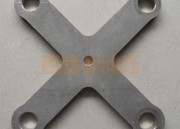
What are the precautions in the processing of metal stamping parts?
1. Attention should be paid to processing metal stamping parts
1. Cracking at the bottom of the part: The main reason for the cracking at the bottom of the part is that the plasticity of the material is poor or the blank holder of the mold is pressed too tightly. The preventive measure is to replace the material with better shaping or loosen the blank holder.
2. Wrinkles on the side walls of the parts: The main reasons for the wrinkles on the side walls of the parts are the insufficient thickness of the material (thinner than the small allowable thickness) or the eccentricity when the upper and lower molds are installed, resulting in a gap on one side If it is too large, the gap on the other side is too small. The preventive measure is to replace the material in time and readjust the mold.
3. Scratches on stamping parts: The main reason for scratches on parts is that there are sharp scars on the mold or metal dust falls into the mold. The preventive measures are to grind the scars on the mold and clean the metal dust.
2. Employees should pay attention to their own operating procedures in the process of stamping parts processing
1. It is strictly forbidden to wear slippers when going to work, so as not to hit the feet with molds and iron blocks in the workshop. Squad leaders, fitters and mold repairers must wear safety shoes when going to work.
2. At work, first check whether the equipment is running abnormally, such as single, unclear continuous flushing, poor operation or electrical failure, immediately stop the machine, and promptly find a technician on duty to deal with it.
3. Check the equipment according to the inspection content on the equipment inspection card, pay special attention to whether the guide and braking device of the punch press are in normal operation, and the functions of single punch and continuous punch are clear.
4. It is strictly forbidden for operators and mold maintenance personnel to put their hands into the mold for operation.
5. Any flammable and explosive items cannot be stored under the switch.
6. When installing the suction fan, the operator is strictly forbidden to put his hand on the motor to clean up the waste.
7. Cut off the power supply, clean and scrub the work surface, remove the mold for maintenance and storage, and check the oil in the lubrication system at certain times every week.
8. Male operators are strictly prohibited from having long hair, and female operators should roll up their long hair to prevent the hair from getting caught in the flywheel.
9. It is strictly forbidden to wear gloves when drilling and milling machines; when using the grinding machine, wear masks and goggles to protect yourself.
10. Pay attention to fire prevention of other oils such as white oil, alcohol, cleaning agent, etc.
11. When there is oil, clean it up in time to avoid slipping.
12. Special tools (pliers, hooks) must be used when laying out or manually feeding and taking out blanks individually. It is strictly forbidden to feed and take blanks by hand. One switch will hurt your hand, you need a double switch. The machine must not leak oil, otherwise it will fall off. Do not expose the power supply, it is dangerous.
13. Gloves should be worn when packing materials, leftovers and molds to avoid scratching hands.
14. Pay attention to dragging the mold to prevent it from falling on the ground (the flatbed truck must be lowered to pull the mold).
15. The operator needs to wear earplugs.
16. When a new employee goes to work on the first day, the team leader must explain the safety operation rules to him, and learn the safety operation rules once a week.
17. It is strictly forbidden to blow the air gun at people, it is easy to hurt the eyes.
18. When adjusting the machine, the machine must be adjusted to single action, and it is strictly forbidden to move the discharge belt.
19. Operators are strictly prohibited from chasing and beating in the workshop, so as to avoid falling, knocking over the product or hurting themselves.
20. When installing the mold on the small punch, first loosen the locking device of the guide rail, install the upper and lower molds, and then adjust the stroke of the guide rail until the requirements are met and the fastening device is locked. In addition, a single stroke must be performed when the high punch is set up in the mold. After locking the upper mold, the oil pressure locks the mold and then locks the lower mold, and check again before production.
21. It is strictly forbidden for non-electricians to connect and repair the machine.
22. Wear gloves and pay attention when stamping iron sheets, otherwise it will hurt your hands.
23. It is strictly forbidden to use the foot switch on the punch, and all the original equipment of the machine are removed.
24. When the machine is found to be abnormal, turn off the power first, and then find the technician on duty to deal with it in time.
25. When cleaning and checking the equipment, the power must be cut off before operation.
26. Check whether various equipment and materials are ready.
Read More →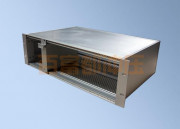
What are the reasons for the failure of bending sheet metal processing?
In production, there will be many defective products in product processing. These bad contents include improper angles, different heights of folded edges, two bending dies with tools, scratches and folded edges leading to hole dislocation, etc. These are all caused by human factors.
If the angle is not in place, the production pressure is not suitable (either too large or too small). Technicians need to carefully adjust the appropriate pressure to ensure the accuracy of the product’s bending angle.
The height of the folded edge is not the same, that is, the positioning of the two sides is not on the same line, and the size of the processed product is naturally different. In order to solve this problem, the operating technician needs to correct the rear positioning when processing any product.
There are obvious scratch marks on both sides of the folded edges. This phenomenon is actually because the lower mold is not clean, and iron filings fall into the grooves under the mold. To avoid the current practice, when processing products, bend them regularly. Lower tank for cleaning.
The reverse side is also a bad factor caused by human beings. It is a no-no for operators not to look at sheet metal drawings. To solve this problem, there can only be a dead way. Ask the quality personnel to confirm the quality of the processing.
In short, the above four points are the problem points that Xiaobian often sees at the scene of sheet metal processing. I will share with you here, and I hope to make similar mistakes as little as possible. It also helps readers.
Read More →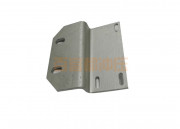
Six tips for improving sheet metal fabrication design
2. Inner radius
As the bend radius decreases, the strain inside the part increases. If the material fatigue point is exceeded, cracks will begin to form. When dealing with thin sheet metal, use the 1x thickness = inner radius rule.
3. Simplify the crease
If you can simplify the design, it will cost less to produce in the long run. Simple curved corners can help you achieve this. These bend radii are equal to or greater than the thickness of the sheet. Keep in mind that designing small elbows for large, thick parts can be inaccurate and expensive. Consider how it is simpler to create a part design that will also be cost-effective and easy to produce.
4. Tooling
The tools you use also limit the shape of the part. Conventional brake tools can bend straight to any length machined from sheet metal. Machining and precision sheet metal parts have very different terms in how they are manufactured and tolerances are allowed.
5. Limit tight tolerance
Excessive tolerances on parts can be unnecessary and expensive. Only a few surfaces are important to its function. These include distance, radius and aperture. Tight tolerance limits will help you create more budget friendly designs.
6. Uniform bending maintenance
Maintaining a properly even bend can increase the load-carrying capacity of the part. Bends at the same location on the part should be designed in the same direction to avoid part reorientation. This helps make parts more cost-effective and easier to produce
By following these tips, fabrication designers can ensure accurate formation and production of thin steel sheets. This helps reduce project costs, shorten lead times and provide customers with better quality. Producing high-quality parts requires careful consideration at every step if you want to be successful.
Read More →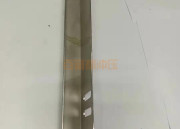
What are the bad reasons for welding sheet metal processing?
2. How does undercutting produce adverse phenomena?
There are two main reasons:
1. The welding control of Welding Brothers is not very good. The molten iron is blown away from the arc blowing force to form a pit.
2. If the current is too large, the front of the product will not fall off under no pressure.
3. How does the welding penetration cause the bad phenomenon?
1. The welding current is too large. Reduce the welding current.
2. The root gap is too large, and the cutting is not accurate. This can only be improved by the skill of the cutting master.
3. The welding speed is too slow, just speed up the welding speed.
4. The blunt edge is too small to reduce the root gap. According to the thickness of the workpiece, select the appropriate groove.
5. The welding arc stays for too long in a certain period, try to avoid the arc staying in a certain period for a long time.
Well, the above is the relevant content about the reasons for poor welding sheet metal processing, I hope the above content will be helpful to readers!
Read More →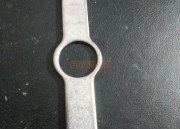
How to plan and design the production standard of metal stamping parts?
1. Production planning of metal stamping parts
1. In the production process, a strict inspection system should be established. The first metal stamping part produced in daily production must be fully inspected and can be put into production only after the inspection is passed. At the same time, inspections should be strengthened. If an accident occurs, it should be dealt with in time.
2. During the stamping process, the mold cavity should be kept clean, and the workpieces that should be arranged in the workplace should be placed neatly.
3. Adhere to a civilized production system. For example, the transmission of metal stamping parts and accessories must use appropriate station equipment, otherwise it will affect the surface quality of the workpiece.
2. Metal stamping design standards
1. When designing metal stamping parts, it should be ensured that the dimensional accuracy and surface roughness requirements are as low as possible, which is conducive to the exchange between metal stamping parts, reducing waste, and ensuring the stability of the quality of metal stamping parts.
2. When designing metal stamping parts, the existing equipment, process equipment and process should be used as much as possible to process metal stamping parts to prolong the service life of stamping dies.
3. The designed stamping parts must be conducive to improving the utilization rate of metal materials, reducing the variety and specifications of materials, and reducing the consumption of materials as much as possible; if allowed, use low-cost materials to make the parts as free as possible and reduce scrap Blanking.
Read More →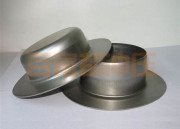
What problems should be paid attention to in the production process of metal stamping parts?
1. Precautions for the figure of metal stamping parts
1. Wrinkles on the side walls of the parts: The main reasons for the wrinkles on the side walls of the parts are insufficient material thickness (thinner than the minimum allowable thickness) or eccentricity when installing the upper and lower molds, resulting in a large gap on one side and a small gap on the other side. Precautions are to replace the material immediately and readjust the mold.
2. Scratches on stamping parts: The main reason for scratches on parts is that there are sharp scars on the mold or metal dust falls into the mold. The preventive measures are to grind the scars on the mold and clean the metal dust.
Read More →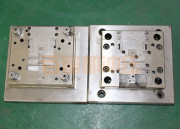
How to deal with mold deformation?
First, the treatment method of mold deformation
1. Reasonable selection of materials. For sophisticated and complex molds, micro-deformation mold steel with good material (such as air-quenched steel) should be selected. For die steel with serious carbide segregation, reasonable forging and quenching and tempering heat treatment should be carried out. For larger and unforgeable die steels, a solution double refinement heat treatment is performed.
2. The mold structure design should be reasonable, the thickness should not be too great, and the shape should be symmetrical. For large deformation molds, the deformation law should be mastered, and machining allowance should be reserved. For large, sophisticated and complex molds, a combined structure can be used.
3. Precise and complex molds should be pre-heated to eliminate residual stress during processing.
4. Reasonable selection of heating temperature and control of heating speed. For sophisticated and complex molds, balanced heating methods such as slow heating and preheating can be used to reduce heat treatment deformation of the mold.
5. On the premise of ensuring the hardness of the mold, try to use pre-cooling, graded cooling quenching or warm quenching process.
6. For sophisticated and complex molds, vacuum heating and quenching and cryogenic treatment after quenching should be used as much as possible.
7. For some sophisticated and complex molds, pre-heat treatment, aging heat treatment, and quenching and tempering nitriding heat treatment can be used to control the accuracy of the mold.
8. When repairing defects such as mold blisters, pores, and wear, use repair equipment with small thermal shocks such as cold welding machines to avoid deformation during the repair process.
In addition, correct heat treatment process operations (such as hole plugging, tying holes, mechanical fixing, appropriate heating methods, correct selection of the cooling direction of the mold and the direction of movement in the cooling medium, etc.) and reasonable tempering heat treatment process also reduce accuracy and Effective measures for complex mold deformation.
Read More →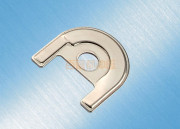
What are the application scope of metal stamping products?
1. Application scope of metal stamping products
1. Stamping parts for daily necessities: mainly to do some handicrafts, such as tableware, kitchen utensils, faucets and other daily hardware.
2. Electrical device stamping: The electrical stamping factory is a new industry developed with the development of electrical appliances. Such manufacturers are mainly concentrated in the South.
3. Stamping in the automotive industry: For example, the body, frame, rim and other parts are stamped. Mainly deep drawing, mainly concentrated in automobile factories, tractor factories, aircraft factories and other large factories.
4. Stamping in the medical industry: It is necessary to assemble various precision medical devices, and the stamping in the medical industry develops rapidly.
5. Special stamping enterprises. For example, the stamping of aerospace components belongs to this category, but these process plants also belong to some large factories.
Metal stamping parts have the advantages of simple operation, easy automation, and accelerated production efficiency. They are widely used in many industries and play an indispensable role.
Read More →

